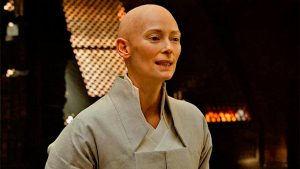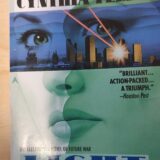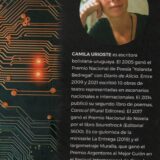
For the first half hour or so of Doctor Strange, I was thinking: Marvel has done it again.
What seemed to be unfolding was an intriguing, involving fantasy story, told with heaps of visual imagination.
But for me – and it seems I may be in a minority here – it all unravelled after that. It somehow turned into a spectacular but oddly empty experience. And it bothers me that a lot of critics have been hailing it as a great movie.
I have to declare at the outset that I don’t recall ever reading a Doctor Strange comic, but I was gripped by the introduction to the gifted but arrogant surgeon Stephen Strange (Benedict Cumberbatch), who loses the use of his hands following a car accident. The crash, by the way, is one of those rare pieces of cinema that genuinely seems to deliver a jolt to the audience.
Shunning conventional efforts to help him rehabilitate, Strange instead pursues a path that leads him to the Himalayan community of Kamar-Taj, where a mystic known as the Ancient One (Tilda Swinton) presides over the secrets of other realms. His journey of discovery leads him to do battle, across the globe and through the dimensions, with the evil Kaecilius (Mads Mikkelsen).
If there’s a film-maker whose name keeps coming to mind while watching Doctor Strange, it’s Christopher Nolan. The lengthy Himalayan sequences recall Bruce Wayne’s period of instruction in Batman Begins, while the fight scenes in which reality and urban landscapes are literally warped and twisted could have been lifted straight out of Inception. All this is somewhat surprising, since Marvel’s productions have steered clear of the darker atmosphere of Nolan’s Batman movies.
But director and co-writer Scott Derrickson isn’t able to give his story the narrative coherence that marks Nolan’s movies – or of 2001: A Space Odyssey, whose light show sequence may also come to mind during the film’s more psychedelic sequences. It’s a film that seems to think incomprehensibility is just as good as complexity.
Mumbo-jumbo about the multiverse and hidden dimensions is all very well, but a story-teller has to explain the rules of these realms – and their relevance to our own world – if the audience is to feel involved. It’s quite possible that all this babble about the dark dimension, the mirror dimension and the astral plane does make sense to those who have had the comic books as a primer, but few concessions are made to the newcomer.

The film is at its best when the battle through space and time lands on the doorstep of our here-and-now world. Ironically, though, the real world of the 21st century movie industry also intrudes into the viewer’s experience.
There was controversy before the film’s release about the fact that the Ancient One was being turned from a Tibetan monk into a white woman. It was assumed – and apparently confirmed by co-writer C. Robert Cargill – that this was being done out of deference to China and its many millions of cinema-goers. Not only does the film avoid upsetting China, but it also flatters the Chinese market by setting a key part of the action in Hong Kong – something that big Hollywood movies are doing with increasing regularity. In fact, as soon as we learn that the Ancient One and her mystics have three “sanctums”, in New York, London and Hong Kong, we get the feeling that the film is carefully setting its action sequences in all three of Hollywood’s major markets.
This might just reflect the reality of making a $165 million dollar movie in today’s world, but it smacks of a cynicism that doesn’t sit well with the film’s efforts to come across as an other-worldly and mind-expanding variation on the genre.
For all their noise and scale, the Marvel movies work best when the issues at stake are recognisably human. Captain America is the tale of a young man who initially has a scrawny body but desperately wants to serve his country and fight fascism. Inside the Iron Man costume is a flawed man seeking to redeem himself. Ant-Man is a hapless petty crook who becomes a much bigger man when he’s shrunk to microscopic size. These are the personal motivations that make the super-powered heroes truly heroic.
Cumberbatch’s Doctor Strange, on the other hand, shows little emotional investment in anything other than his own identity. Combine this shallowness with an under-developed villain and perhaps the eye-popping climax was never going to stir the viewer as it should.
There is a great deal to enjoy in Doctor Strange, including Cumberbatch’s charismatic performance, those high quality visuals and Michael Giacchino’s handsome music score. And yet I was left unmoved.
Perhaps I’m out of step with people’s taste in superheroics. The Marvel Studios movies began with Iron Man (2008), which I didn’t think was quite as intelligent a comic book movie as many reviewers said. In Doctor Strange, we have a film which I don’t think is as daring and exciting as many reviewers have lauded it to be. In between, there have been quite a few films which were much better at winning the audience’s sympathy for their preposterously costumed protagonists.











Recent Comments